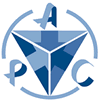The EUSO@TurLab project in the framework of the JEM-EUSO program
Résumé
Abstract The EUSO@TurLab project aims at performing experiments to reproduce Earth UV emissions as seen from a low Earth orbit by the planned missions of the JEM-EUSO program. It makes use of the TurLab facility, which is a laboratory, equipped with a 5 m diameter and 1 m depth rotating tank, located at the Physics Department of the University of Turin. All the experiments are designed and performed based on simulations of the expected response of the detectors to be flown in space. In April 2016 the TUS detector and more recently in October 2019 the Mini-EUSO experiment, both part of the JEM-EUSO program, have been placed in orbit to map the UV Earth emissions. It is, therefore, now possible to compare the replicas performed at TurLab with the actual images detected in space to understand the level of fidelity in terms of reproduction of the expected signals. We show that the laboratory tests reproduce at the order of magnitude level the measurements from space in terms of spatial extension and time duration of the emitted UV light, as well as the intensity in terms of expected counts per pixel per unit time when atmospheric transient events, diffuse nightlow background light, and artificial light sources are considered. Therefore, TurLab is found to be a very useful facility for testing the acquisition logic of the detectors of the present and future missions of the JEM-EUSO program and beyond in order to reproduce atmospheric signals in the laboratory.


